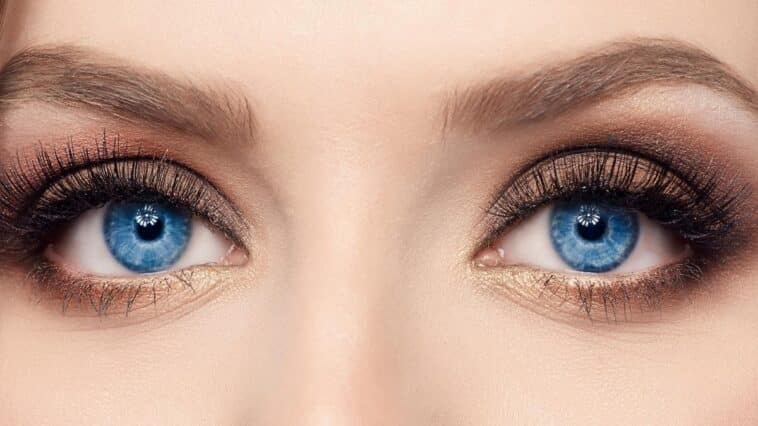Blue eyes are a highly distinctive and uncommon physical characteristic observed in humans, animals, and even certain plants. For generations, people have been fascinated and admired by their mesmerizing look. However, what precisely imparts blue eyes with their aesthetically pleasing hue? What is the reason behind their rarity?
This thorough article will provide an in-depth exploration of blue eyes, including topics such as the scientific explanation for their hue, intriguing facts, potential health consequences, and common misconceptions. If you are interested in learning about your own eye color or simply intrigued by this uncommon characteristic, continue reading to explore the marvels of blue eyes.
The Science Behind Blue Eyes
How Are Blue Eyes Formed?
Blue eyes do not possess blue pigment in the conventional sense. Instead, they are formed through the interaction of light with the iris, which is the pigmented portion of the eye. Melanocytes, located in the iris, are responsible for the production of melanin, the pigment that determines eye, skin, and hair color. Individuals with blue eyes possess a lower concentration of melanin in their irises, which permits a greater amount of light to disperse and bounce off, resulting in the visual perception of a blue hue. The phenomenon of light being scattered in various directions is referred to as Rayleigh scattering, which is also responsible for the blue color of the sky.
Blue eyes can range in color from a pale, frosty blue to a dark, metallic blue. The hue of blue eyes can exhibit variations in response to lighting conditions, emotional states, and even the attire one adorns.
Genetic Factors and Blue Eyes
The pigmentation of your eyes is dictated by the quantity and composition of melanin in your iris, a trait that is regulated by your genetic makeup. Blue eyes exhibit a recessive characteristic, necessitating the acquisition of two copies of the blue-eye gene (one from each father) in order for an individual to possess blue eyes. OCA2 and HERC2 are the essential genes responsible for determining eye color as they control the generation of melanin in the iris.
Curiously, individuals that possess blue eyes have a shared progenitor. Genetic analysis indicates that a genetic mutation in the OCA2 gene happened approximately 6,000 to 10,000 years ago. This mutation led to a decrease in the production of melanin, resulting in the development of blue eyes. Over time, this mutation became prevalent in certain populations, resulting in blue eyes being a rare yet highly esteemed characteristic.
Blue Eyes and Sensitivity to Light
Why Are Blue Eyes Sensitive to Light?
Blue eyes are more sensitive to light due to a lower amount of melanin in the iris, which is the colored part of the eye. Melanin helps protect the eyes from the harmful effects of sunlight and other bright lights. Therefore, the less melanin in blue eyes makes them more susceptible to discomfort and sensitivity when exposed to bright light.
Individuals possessing blue irises frequently encounter heightened light sensitivity, a condition referred to as photophobia. The sensitivity arises due to the lower melanin content in blue eyes, resulting in reduced natural defense against intense light and UV radiation. Consequently, individuals possessing blue eyes may experience discomfort when exposed to direct sunshine or intense artificial lights.
To safeguard your eyes from detrimental UV rays, it is crucial to don sunglasses equipped with UV protection whenever you are outside, particularly if you possess blue irises. This can aid in mitigating discomfort and minimizing the likelihood of acquiring ocular disorders associated with ultraviolet (UV) exposure.
The Unique Nature of Blue Eyes
Blue Eyes Aren’t Actually Blue
Contrary to popular belief, blue eyes do not possess a genuine blue hue. Blue eyes have less pigment compared to brown or green eyes, which derive their color from melanin. The blue hue of the iris is attributed to the scattering and reflection of light, rather than the presence of any blue pigment. This optical phenomenon is analogous to the perception of the ocean seeming blue despite the transparency of the water.
Blue eyes have the ability to undergo color variations over time or under varied lighting circumstances, contributing to their distinctive and ever-changing look.
The Rarity of Blue Eyes
Blue eyes are considered to be one of the most uncommon eye hues globally. Roughly 8-10% of the worldwide populace possesses blue eyes. They are predominantly prevalent among individuals of European ancestry, specifically in Northern and Eastern Europe. Blue eyes are frequently regarded as a representation of beauty and distinctiveness in these areas.
Blue eyes are predominantly prevalent among individuals of European descent, but they can also be observed in people from other regions such as the Middle East, Africa, and Asia, but in significantly lower frequencies.
Myths and Superstitions About Blue Eyes
Blue Eyes and Supernatural Powers
Across the course of history, blue eyes have been linked to several superstitions and tales. A widely held idea is that individuals with blue eyes possess exceptional strength or supernatural abilities. Although these concepts are primarily based on traditional beliefs, it is undeniable that blue eyes possess a distinct aura that sets them apart.
Blue eyes are believed to be auspicious or serve as a talisman against the malevolent gaze in many societies. Although without scientific evidence, these ideas contribute to the appeal and intrigue surrounding blue eyes.
Blue Eyes and Health Indicators
There is a prevailing notion that eye color, including the presence of blue eyes, can serve as a reliable indicator of one’s general state of health. Although not totally precise, there are certain health consequences linked to having blue eyes. Individuals with lighter-colored eyes, such as blue eyes, may have a higher susceptibility to specific health disorders like photophobia, migraines, and eye strain. This is because they have heightened sensitivity to light.
In addition, certain research indicate that individuals with blue eyes may possess a slightly elevated susceptibility to developing inflammatory disorders such as rheumatoid arthritis and lupus. Nevertheless, it is crucial to acknowledge that these connections are not conclusive, and eye color by itself is not a dependable indicator of one’s well-being.
Fascinating Facts About Blue Eyes
Blue Eyes Are Rare and Special
As previously said, blue eyes are an uncommon and distinctive characteristic, comprising only a small proportion of the world’s population. The scarcity of blue eyes is a key factor in why they are frequently regarded as unique and highly sought-after. Blue eyes are seen as symbols of purity, wisdom, and tranquility in certain civilizations.
People with Blue Eyes Share a Common Ancestor
According to an intriguing scientific hypothesis, individuals with blue eyes can all be linked to a solitary ancestor who resided near the Black Sea approximately 6,000 to 10,000 years ago. This theory is founded on genetic research that demonstrates the origin of the mutation responsible for blue eyes from a solitary progenitor and its subsequent dissemination throughout diverse populations throughout history.
Although this hypothesis is widely acknowledged, it is crucial to bear in mind that genetics is intricate, and numerous factors play a role in determining eye color.
Can Your Baby’s Eye Color Change?
Why Blue Eyes in Babies Might Change
A significant number of infants are born with blue irises, although this occurrence does not invariably indicate that their eyes will remain blue throughout their lives. The pigmentation of an infant’s eyes has the potential to undergo alterations as they progress in age, particularly within the initial months of their existence. This phenomenon arises due to a gradual augmentation in the quantity of melanin within the iris, resulting in a deepening of the eye color.
If both parents possess the trait of blue eyes, it is quite probable that their offspring will inherit the same trait. Eye color is influenced by several genes, which means that a baby’s eyes may undergo changes and transition to green, hazel, or even brown during their development.
Factors That Influence Eye Color in Babies
Genetics and ethnicity are two key elements that might impact the ultimate eye color of a kid. For instance, infants with European ancestry have a higher probability of possessing lighter eye hues, such as blue or green, whereas those with African, Asian, or Hispanic ancestry are more inclined to have darker eyes.
It is noteworthy that the color of a baby’s eyes can still undergo changes for several months after birth. Therefore, the final determination of a baby’s eye color may not occur until they reach approximately six months to one year of age.
Protecting Your Blue Eyes
Due to their heightened photosensitivity, it is crucial to shield your blue eyes from detrimental ultraviolet (UV) radiation. It is crucial to wear sunglasses that offer 100% UV protection when outdoors to avoid sun-induced eye damage and discomfort.
In addition, routine eye examinations are crucial for preserving the well-being of your eyes and detecting any potential problems at an early stage. If you are experiencing discomfort due to bright light or have concerns regarding the health of your eyes, it is advisable to seek advice and explore treatment options from an eye care specialist.
Conclusion: Embrace the Beauty of Blue Eyes
The characteristic of having blue eyes is an uncommon and appealing trait that has been praised for generations. Blue eyes encompass more than a mere physical characteristic, as they symbolize beauty, enigma, and individuality, owing to their distinctive genetic origins, cultural significance, and health concerns.
Your eye color, whether it is light blue, medium blue, or dark blue, contributes to your individuality. To fully appreciate the beauty of blue eyes, it is important to comprehend the scientific aspects behind them, acquire knowledge on how to enhance and safeguard them, and have an understanding of the myths and realities associated with this eye color. By doing so, you can fully embrace the allure of your blue eyes and relish the admiration that comes with possessing one of the world’s rarest and most exquisite eye colors.






